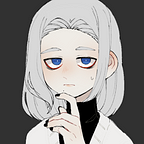The last time you stubbed your toe, did it feel like you “lost” your health? Do you think you would have died if you, for example, stubbed your toe another 100 times? What about another 1000 times? And the most important question: would you hit your toe into that chair again after hitting it for the first time?
In game design, health mechanics can respond to a player’s inputs and limit the amount of said inputs allowed within a singular attempt. This is one way to teach the player how to engage with a game’s systems, and to incentivize them to play within a given ruleset.
An example: Children find out about the concept of “hot” by touching a kettle boiling with water and getting burned. They cut their finger while learning how to cut vegetables and experience what “cutting one’s finger” means. Without those consequences for their mistakes, children may not understand why touching a hot kettle is a bad idea.
When a person interacts with a system for the first time, they are that child who might have hurt themselves before. With game systems in particular, that hypothetical child probably hurt themselves plenty of times beforehand. Thankfully, that experience, even though unique to each game system, can be easily used within most of the systems.
Be it a beginner-friendly platformer like Super Mario Bros., a challenging survival horror like Resident Evil or a gameplay-heavy tabletop RPG like Blades in the Dark, health takes many shapes and forms for its specific purpose within its game system.
In SMB, health is a reward for doing well that either lets players to recover from a mistake or ignore some or most of the obstacles altogether. Health works as an an encouragement for players to continue pushing forward.
In Resident Evil, health is one of many recourses that players are required to manage for making sure that their Player Character (PC) survives while progressing through the game. In speedruns of Resident Evil, you can frequently see players deliberately taking hits from hazards so they don’t spend too much time or ammo to deal with obstacles. Health works not only as a threshold for making mistakes but also as an indicator of one’s ability to take risks.
In Blades in the Dark, health is the amount of stat and narrative penalties that PCs can take before they die; however, to actually die in that game you need to fail a survival roll as well. The Game Master is the one who decides how much harm PCs take. In this context, health is more of a narrative tool than a mechanic. The health mechanic in Blades in the Dark allows for narrative complications — a core appeal of the game.
If it is implemented well, health can be an intuitive mechanic that players can figure out by themselves. However, simply adding health into your game does not mean that it will be easy for players to comprehend. In the previously mentioned examples, health changes are shown to the players clearly and they are able to track that change. That change can be signified visually (Mario becoming taller or shorter, PC in Resident Evil gesturing that they are in a bad state) or mechanically (PC in Resident Evil moving slower after taking a certain amount of damage, PCs in Blades in the Dark getting -1 towards rolling certain attributes based on the type of injury). Without those indicators, players would not know if they can take any risks or not.
Those are only a few examples of the implementation of health in video games, but they show the spectrum of opportunities that the mechanic provides.
Support me on Patreon: https://www.patreon.com/soothemoss
Follow me on Twitter: https://twitter.com/soothemoss
